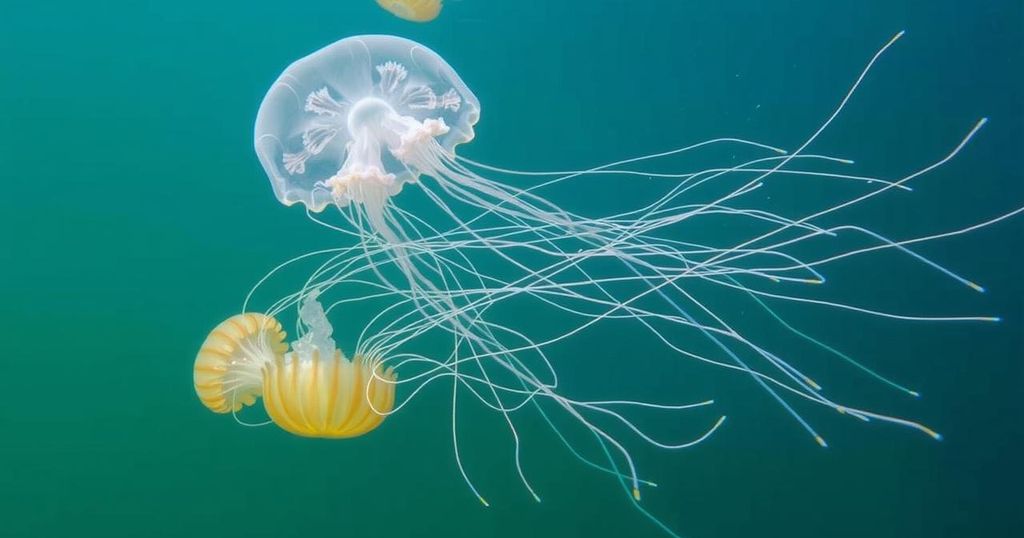Freshwater jellyfish, particularly Craspedacusta sowerbii or Peach Blossom Jellyfish, are increasingly being reported in Canadian lakes due to climate change. These small jellyfish, identifiable during warm periods, have been present in Canada since at least 1938 but are becoming more visible due to rising temperatures.
Jellyfish are increasingly found in freshwater lakes across Canada, particularly the Peach Blossom Jellyfish, also known scientifically as Craspedacusta sowerbii. These small, typically non-stinging jellyfish, measuring between one and two-and-a-half centimeters in diameter, are becoming more visible due to environmental shifts caused by climate change. Initially introduced from China, these organisms have been present in certain Canadian lakes for decades, with the earliest documentation dating back to 1938 in Quebec. Their presence has remained largely unnoticed due to their life cycle; they spend most of their time in the less noticeable polyp stage, only transforming into mature jellyfish during warm conditions, specifically when water temperatures exceed 25 degrees Celsius. This life cycle allows them to proliferate rapidly, resulting in blooms that can appear suddenly in large numbers, yet typically last a brief period.
The observation of jellyfish in freshwater environments has raised questions about their survival and impact in these ecosystems. While most commonly associated with marine environments, certain species, notably Craspedacusta sowerbii, have adapted to freshwater habitats. The reasons for the increased sightings are attributed to various factors, including climate change, which has led to warmer water temperatures, enabling the mature form of these jellyfish to thrive. Their introduction to Canadian lakes was likely facilitated by ornamental aquatic plants imported from their native habitat in China. Furthermore, the potential effects of these jellyfish on the local food web—particularly their impact on zooplankton populations, which serve as a key food source for many fish species—remain an area of significant concern and study.
In summary, the presence of jellyfish in Canadian freshwater lakes is a phenomenon that is on the rise, driven largely by climate change and warmer water temperatures. As the Peach Blossom Jellyfish proliferates, it poses ecological challenges, particularly regarding its interaction with local zooplankton populations and the overall lake food web. Understanding these changes is crucial to managing biological diversity and maintaining healthy aquatic ecosystems as our climate continues to evolve.
Original Source: theconversation.com






